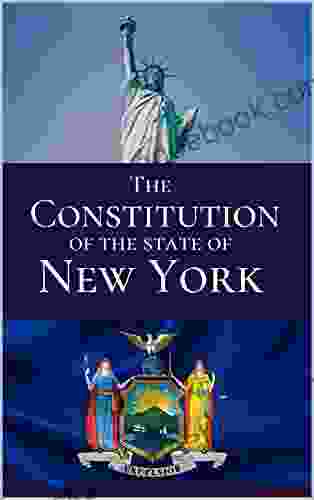The Evolution of the Fourth Amendment: A Comprehensive Exploration

The Fourth Amendment to the Constitution of the United States, adopted in 1791, safeguards citizens against unreasonable searches and seizures. This fundamental right to privacy has played a crucial role in shaping American society, evolving significantly over time to address changing technological advancements and societal values.
Historical Origins
The Fourth Amendment emerged in response to the British government's oppressive practices during the colonial era. Writs of assistance, general warrants that allowed British officials to search any location without specific probable cause, were widely criticized as a violation of natural rights.
4.2 out of 5
| Language | : | English |
| File size | : | 1788 KB |
| Text-to-Speech | : | Enabled |
| Screen Reader | : | Supported |
| Enhanced typesetting | : | Enabled |
| Word Wise | : | Enabled |
| Print length | : | 332 pages |
The Fourth Amendment introduced specific requirements for obtaining a warrant: it must be supported by probable cause, describe the place to be searched, and identify the items or persons to be seized.
Key Cases and Interpretations
Numerous landmark cases have shaped the interpretation of the Fourth Amendment, including:
- Boyd v. United States (1886): Established that the Fourth Amendment protects not only physical intrusions but also the seizure of private papers and effects.
- Weeks v. United States (1914): Introduced the exclusionary rule, which prohibits the use of illegally obtained evidence in criminal trials.
- Mapp v. Ohio (1961): Made the exclusionary rule applicable to state criminal trials, extending the Fourth Amendment's protections to all Americans.
- Kyllo v. United States (2001): Narrowed the scope of "search" under the Fourth Amendment, holding that using a thermal imaging device to scan a home's interior without a warrant violated reasonable expectations of privacy.
- Carpenter v. United States (2018): Extended Fourth Amendment protections to cell phone location data, recognizing it as a sensitive form of privacy.
Technological Advancements and Digital Privacy
The Fourth Amendment has faced new challenges in the digital age, with rapid advancements in technology and the explosion of personal data collected and stored online.
The Supreme Court has grappled with the Fourth Amendment implications of:
- GPS tracking devices: In United States v. Jones (2012),the Court held that attaching a GPS tracking device to a vehicle without a warrant violated the Fourth Amendment.
- Surveillance cameras: In Florida v. Riley (2014),the Court ruled that police need a warrant to search the contents of a cell phone seized during an arrest.
- Digital data collection by private companies: In Carpenter v. United States (2018),the Court held that a third-party cell phone company could not share location data with law enforcement without a warrant.
Contemporary Implications
The Fourth Amendment continues to play a vital role in safeguarding individual privacy in the 21st century.
Ongoing debates surround:
- The use of facial recognition technology by law enforcement and private companies, raising concerns about potential discrimination and surveillance.
- The balance between national security and privacy, particularly in the context of government surveillance programs.
- The need for updates to Fourth Amendment jurisprudence to address the unprecedented data collection capabilities of modern technology.
The Fourth Amendment has undergone a continuous evolution, adapting to societal and technological changes to uphold the fundamental right to privacy. From its origins in the fight against colonial oppression to its application in the digital age, it remains a cornerstone of American liberty and a safeguard against government overreach.
As technology continues to advance and new privacy challenges arise, the Fourth Amendment will undoubtedly continue to be a subject of debate and reinterpretation, ensuring that the delicate balance between individual rights and societal interests is preserved.
4.2 out of 5
| Language | : | English |
| File size | : | 1788 KB |
| Text-to-Speech | : | Enabled |
| Screen Reader | : | Supported |
| Enhanced typesetting | : | Enabled |
| Word Wise | : | Enabled |
| Print length | : | 332 pages |
Do you want to contribute by writing guest posts on this blog?
Please contact us and send us a resume of previous articles that you have written.
 Book
Book Page
Page Chapter
Chapter Text
Text Story
Story Reader
Reader Library
Library Magazine
Magazine Newspaper
Newspaper Shelf
Shelf Preface
Preface Annotation
Annotation Manuscript
Manuscript Scroll
Scroll Bestseller
Bestseller Library card
Library card Narrative
Narrative Autobiography
Autobiography Memoir
Memoir Reference
Reference Encyclopedia
Encyclopedia Dictionary
Dictionary Character
Character Resolution
Resolution Catalog
Catalog Card Catalog
Card Catalog Borrowing
Borrowing Stacks
Stacks Study
Study Lending
Lending Reserve
Reserve Academic
Academic Rare Books
Rare Books Literacy
Literacy Study Group
Study Group Dissertation
Dissertation Awards
Awards Book Club
Book Club Theory
Theory Textbooks
Textbooks Stephanie Barron
Stephanie Barron Jonathan Manthorpe
Jonathan Manthorpe Pedro K Beredjiklian
Pedro K Beredjiklian Richard Lawry
Richard Lawry Cyrus Parsa
Cyrus Parsa Brain School
Brain School Tom Skinner
Tom Skinner Ola Gjeilo
Ola Gjeilo Joshua C Kendall
Joshua C Kendall Donna Douglas
Donna Douglas Cathy Marie Buchanan
Cathy Marie Buchanan Madhavi Nawana Parker
Madhavi Nawana Parker Jackie Minniti
Jackie Minniti Christine R Finnan
Christine R Finnan Charles Protzman
Charles Protzman Emilio J Becker
Emilio J Becker Anna Hrachovec
Anna Hrachovec Rachel Burns
Rachel Burns Michael Tanner
Michael Tanner Keely Chace
Keely Chace
Light bulbAdvertise smarter! Our strategic ad space ensures maximum exposure. Reserve your spot today!

 Sidney CoxJacqueline "Jackie" Minniti: An Inspiring Journey from Banking to Real Estate...
Sidney CoxJacqueline "Jackie" Minniti: An Inspiring Journey from Banking to Real Estate... Foster HayesFollow ·6.7k
Foster HayesFollow ·6.7k Ernest ClineFollow ·18.6k
Ernest ClineFollow ·18.6k Percy Bysshe ShelleyFollow ·15.9k
Percy Bysshe ShelleyFollow ·15.9k Jamie BlairFollow ·9.8k
Jamie BlairFollow ·9.8k Cruz SimmonsFollow ·16.3k
Cruz SimmonsFollow ·16.3k Pat MitchellFollow ·17.5k
Pat MitchellFollow ·17.5k Brandon CoxFollow ·15.7k
Brandon CoxFollow ·15.7k Gerald BellFollow ·2.8k
Gerald BellFollow ·2.8k

 Amir Simmons
Amir SimmonsMore Zeal Than Discretion: A Closer Look at the Risks and...
Enthusiasm is often seen as a positive...

 Wayne Carter
Wayne CarterYear of the Dog: American Poets Continuum 178
Year of the Dog is a...

 David Foster Wallace
David Foster WallaceThe Constitution of the State of New York: A...
The Constitution of the...

 Harvey Bell
Harvey BellSmall Cetaceans of Japan: Exploitation and Biology
Small cetaceans, including...

 Blake Bell
Blake BellEffortless Elegance: A Comprehensive Guide to Captivating...
In the realm of crocheting,...
4.2 out of 5
| Language | : | English |
| File size | : | 1788 KB |
| Text-to-Speech | : | Enabled |
| Screen Reader | : | Supported |
| Enhanced typesetting | : | Enabled |
| Word Wise | : | Enabled |
| Print length | : | 332 pages |












